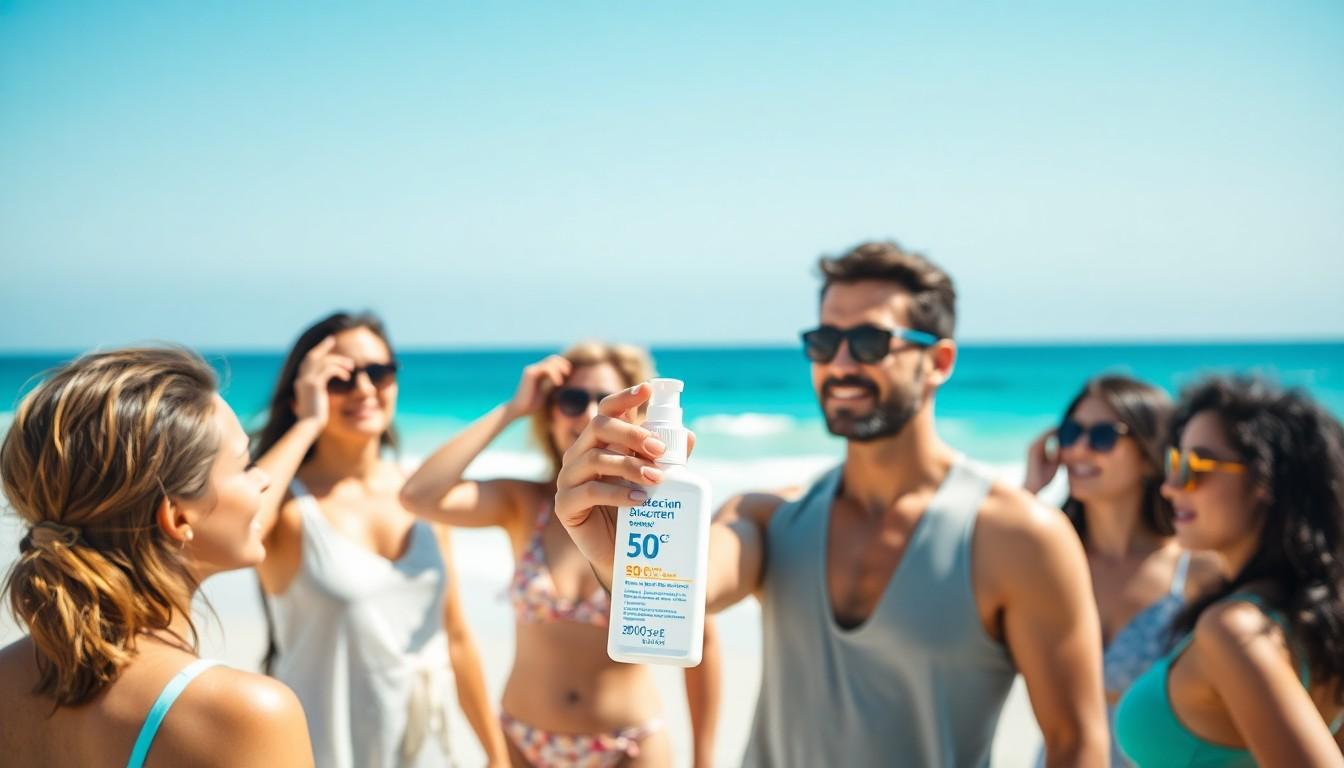Sunscreen is a summer essential, but have you ever wondered if you’re slathering on enough of the good stuff? Enter mitacium dizovid, the unsung hero of sun protection. This ingredient might sound like a character from a sci-fi movie, but it’s actually a powerhouse that helps shield skin from harmful UV rays.
Understanding Mitacium Dizovid
Mitacium dizovid plays a crucial role in sun protection. This ingredient enhances the efficacy of sunscreens against harmful UV radiation.
What Is Mitacium Dizovid?
Mitacium dizovid represents a powerful photoprotective agent. It absorbs and reflects UV rays, preventing skin damage. Its chemical structure allows for optimal absorption, ensuring deeper skin penetration. Research indicates its ability to neutralize free radicals generated by UV exposure. This compound combines with other active ingredients, creating a synergistic effect in formulations.
Benefits of Mitacium Dizovid in Sunscreens
Mitacium dizovid provides numerous benefits within sunscreens. It offers broad-spectrum protection, shielding skin from both UVA and UVB rays. Enhanced skin hydration has been documented with the inclusion of this ingredient. Users experience reduced inflammation, contributing to an overall healthier complexion. Additionally, its lightweight texture ensures comfortable wear throughout the day. Regular use promotes long-term skin health and reduces the risk of photoaging.
Recommended Dosage

Mitacium dizovid significantly enhances sunscreen effectiveness. Proper dosage ensures optimal protection against harmful UV rays.
General Guidelines for Usage
Users should apply a broad-spectrum sunscreen containing a minimum of 2% mitacium dizovid. A sufficient amount equals about one ounce, or approximately a shot glass full, for full body coverage. Reapplication every two hours is essential, especially after swimming or sweating. Following product instructions ensures maximum benefit.
Factors Influencing Dosage
Skin type plays a role in dosage. Individuals with sensitive skin may require different formulations or lower concentrations. Environmental conditions such as sun intensity also affect how much product is necessary. Moreover, personal activities like swimming or exercising increase UV exposure and necessitate more frequent application.
Application Tips
Applying sunscreen with mitacium dizovid correctly maximizes its protective benefits. Users should follow these key practices for effective sun protection.
How to Apply Sunscreen with Mitacium Dizovid
To apply sunscreen with mitacium dizovid, start with clean, dry skin. Dispense about one ounce, which is roughly the size of a shot glass, for full body coverage. Spread the product evenly, ensuring all exposed areas are covered, including the ears, neck, and tops of the feet. Rub it in gently to enhance absorption and effectiveness. Allow the sunscreen to absorb for at least 15 minutes before sun exposure. This waiting period ensures the ingredient activates properly, providing optimal protection.
Frequency of Application
Reapplication of sunscreen is crucial for sustained protection. Apply sunscreen containing mitacium dizovid every two hours during sun exposure. After swimming or sweating, reapplication is necessary to maintain its effectiveness. Factors like skin type and activity levels can influence how often one should apply it. For individuals with lighter skin, increased reapplication frequency may be beneficial. Pay attention to environmental conditions, as intense sunlight or high humidity can accelerate the loss of sunscreen’s protective qualities. Staying vigilant about reapplication enhances overall sun safety.
Potential Side Effects
Using mitacium dizovid in sunscreen can pose certain side effects. Awareness of these side effects helps ensure safe application.
Common Side Effects
Irritation can occur, particularly for those with sensitive skin. Redness and itching around the application site are frequently reported reactions. Some may experience a stinging sensation upon application, especially if the skin is broken or sunburned. A rash may develop in rare cases, requiring immediate medical attention. Users should monitor their skin’s response after applying sunscreen containing mitacium dizovid.
Precautions to Consider
Consulting with a dermatologist is advisable, particularly for individuals with skin conditions like eczema or psoriasis. Conducting a patch test before extensive use helps identify potential allergic reactions. Avoid contact with eyes to prevent discomfort. Storage of sunscreen in a cool, dry place ensures its effectiveness and shelf life. Additionally, checking expiration dates on products containing mitacium dizovid is essential for safety.
Conclusion
Understanding the right amount of mitacium dizovid in sunscreen is crucial for effective sun protection. With a recommended minimum of 2% for broad-spectrum coverage and a full ounce for body application, users can ensure they’re adequately protected from harmful UV rays. Regular reapplication is vital to maintain this protection, particularly in active environments.
Being aware of individual skin responses and potential side effects is equally important. Users should monitor their skin’s reaction and consult a dermatologist when necessary. By following these guidelines, individuals can enjoy the summer sun while safeguarding their skin’s health and appearance.



